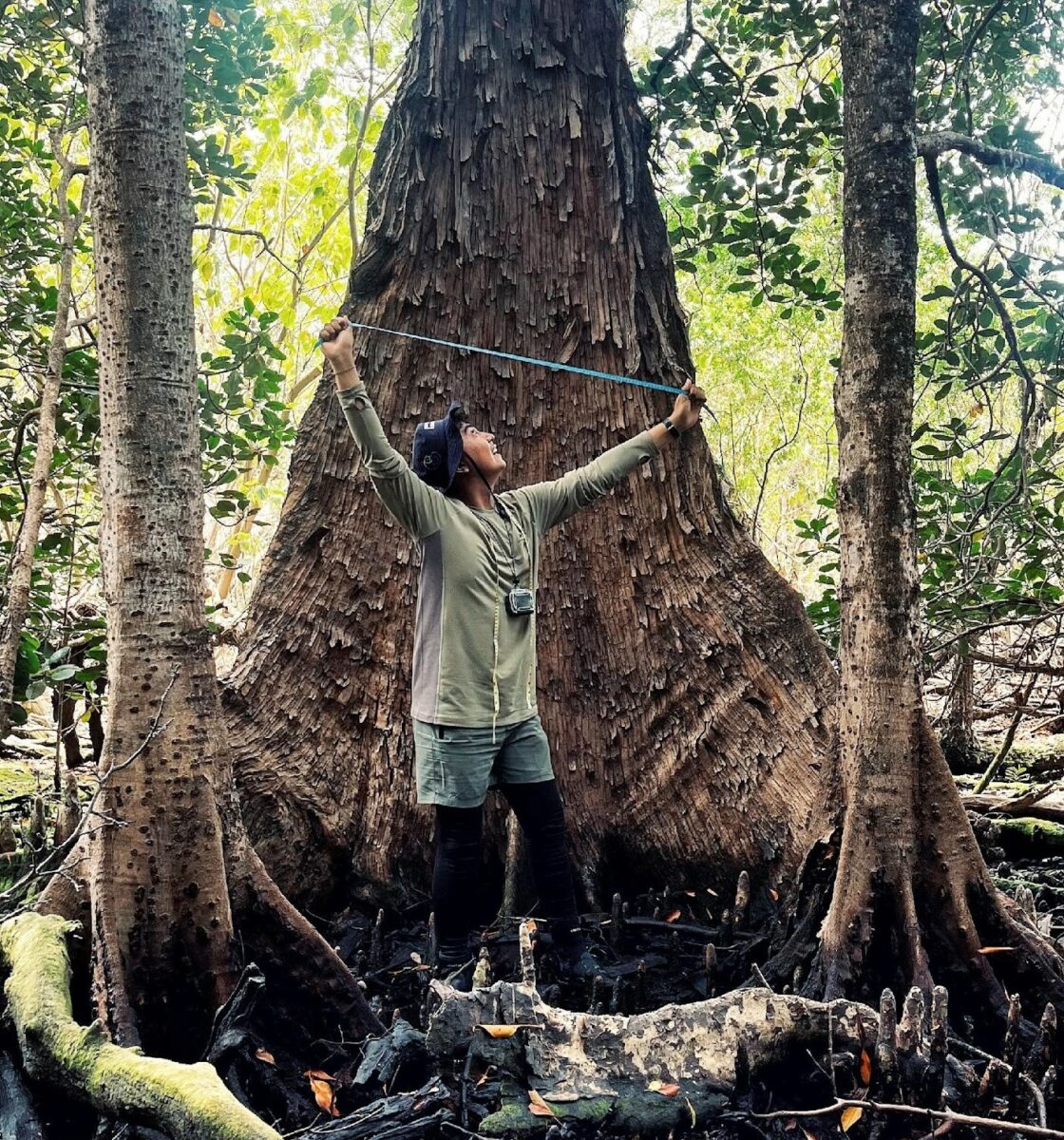The Arafura and Timor Seas (ATS) region is home to a quarter of the world’s mangroves. At the local level, these ecosystems provide nurseries, shelter and sustenance for a multitude of marine life, contributing to the overall biodiversity of the region, while also helping maintain ecological balance on a global scale.
To support the preservation of these vital habitats, the Arafura and Timor Seas Ecosystem Action Phase II (ATSEA-2) Project has been conducting regular monitoring activities in the Southeast Aru Marine Protected Area (MPA), highlighting the natural wealth of the area and engaging local communities in its preservation. This conservation area is made up of various islands, including Enu, Karang, Djeh, Maar, Jin and Jeudin. Together, they create a chain of biodiversity hotspots that links the surrounding ecosystem together.
The Various Benefits of Mangroves on Enu and Karang

The fertile tidal areas of Enu and Karang Islands support a number of mangrove species, including Xylocarpus moluccensis (Lamk) M. Roem. On Enu Island, these trees grow to impressive heights of around 460 cm, with a stem circumference reaching 109 cm. On Karang Island, they also provide significant benefits to the local community; from fuelwood and boat-building materials to tannins for net preservation, traditional medicine and even puzzle-like seeds, these mangroves serve multiple purposes.
The mangroves on Enu and Karang also support populations of mud crabs, specifically Scylla spp. (Karaka). The natural habitat provided for these crabs by the mangroves, with muddy sediments offering shelter and fallen leaves providing a reliable source of food, also delivers benefits to the surrounding communities, especially in Apara Village. Abundant catches of mud crabs during 7-10 day expeditions, in which each person can collect between eight and 15 crabs, demonstrate both the productivity of the ecosystem and the positive impact mangroves provide to local livelihoods.
The mangrove ecosystems on Enu and Karang are essential for both the environment and local communities. Support and participation from various stakeholders, including monitoring activities by the ATSEA-2 Project, are crucial to preserving and sustaining these ecosystems in the Southeast Aru MPA. It is hoped that, through collective efforts, mangroves and the multifaceted benefits they provide can be managed and maintained sustainably.
Expedition to the Southeast Aru MPA

Having viewed the importance of mangrove ecosystems in general, research conducted by Muh. Adinda Zhadeka Al Gozali from National Marine Conservation Office Kupang (Balai Kawasan Konservasi National Kupang/BKKPN Kupang). The research conducted from 2-6 November 2023, explored the Aru Archipelago, a captivating expanse within the National Marine Conservation Area spanning 114,000 hectares, showcasing a rich diversity of mangrove ecosystems. Situated within the Southeast Aru MPA, the six main islands in this area bear witness to the beauty and resilience of mangrove ecosystems.
This research project originally set out to explore 11 stations on six islands within the conservation area. Although time and transportation constraints reduced the number of stations to nine, the project was nevertheless indicative of the many unique challenges faced by researchers in the region; from wild crocodiles to magical taboos, these islands present a different challenge to those studied by researchers in other conservation areas.
The research employed a systematic approach, utilising standardised methods across multiple stations, each with three repetitions and a consistent plot size of 10m x 10m. Various data points were collected, encompassing crucial aspects of the mangrove ecosystem. These include assessing canopy coverage, evaluating mangrove ecosystem structure, measuring tree stem circumference and height, and identifying mangrove species. In addition, the research incorporated an examination of environmental factors such as pollution (mostly household waste and the detritus of fishing activities) and included measurements of water quality parameters. This comprehensive methodology ensured a thorough understanding of the ecological dynamics and health of the mangrove environment under study.
The ultimate aim of monitoring the mangrove ecosystem in the Southeast Aru MPA was to observe, understand and protect biodiversity in this area. With continuous monitoring, changes in the ecosystem can be detected, threats to species can be identified and effective conservation strategies can be designed. This provides crucial insights that can help to maintain the integrity of the mangrove ecosystem, thereby preserving environmental balance and supporting the sustainability of this region.
Addressing Challenges and Embracing the Beauty of Nature

The unique challenges presented by each island have added an intriguing dimension to this research. Djeh Island, with crocodile nests visible along with sunbathing traces, necessitates extra caution for the research team. Conversely, approaching Jeudin Island and its many sacred areas requires a certain amount of circumnavigation, in deference to local traditions.
Despite myriad challenges, the beauty of nature in the Southeast Aru MPA remains astonishing. The mangrove ecosystem, with its dense canopy coverage and diverse fauna, showcases a level of preservation that is worth preserving and appreciating. From crabs to molluscs, these islands serve as homes to various species that enrich underwater life.
In embracing the beauty of nature and addressing challenges in this conservation area, communities need to continuously enhance their understanding of the sustainability of mangrove ecosystems. This can be achieved by co-designing more effective conservation efforts, empowering local communities to protect life in the Aru Islands and mitigate the impacts of environmental changes.
By Janson H. Pietersz (Universitas Pattimura) and Muh. Adinda Zhadeka Al Gozali (BKKPN Kupang)


